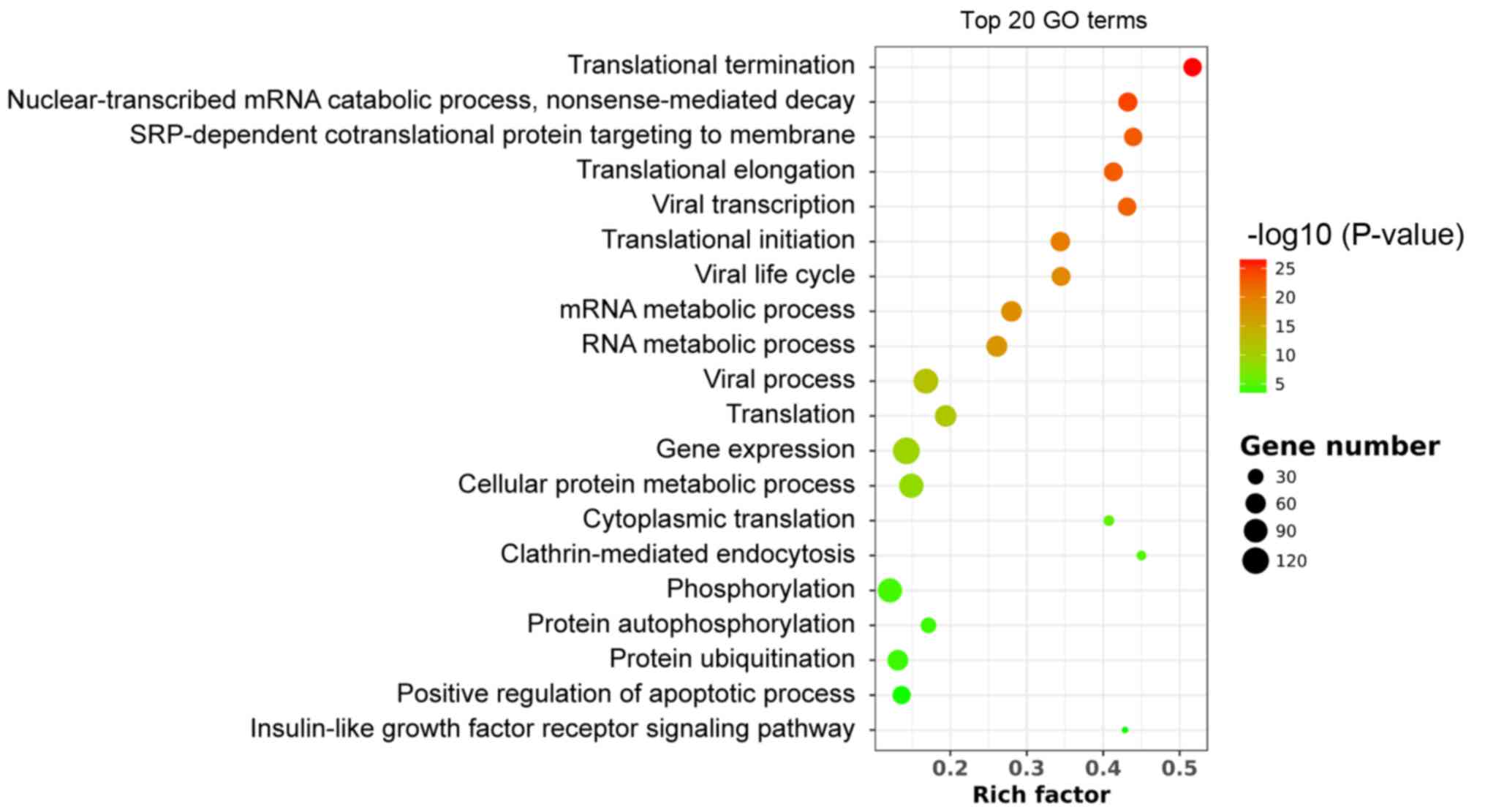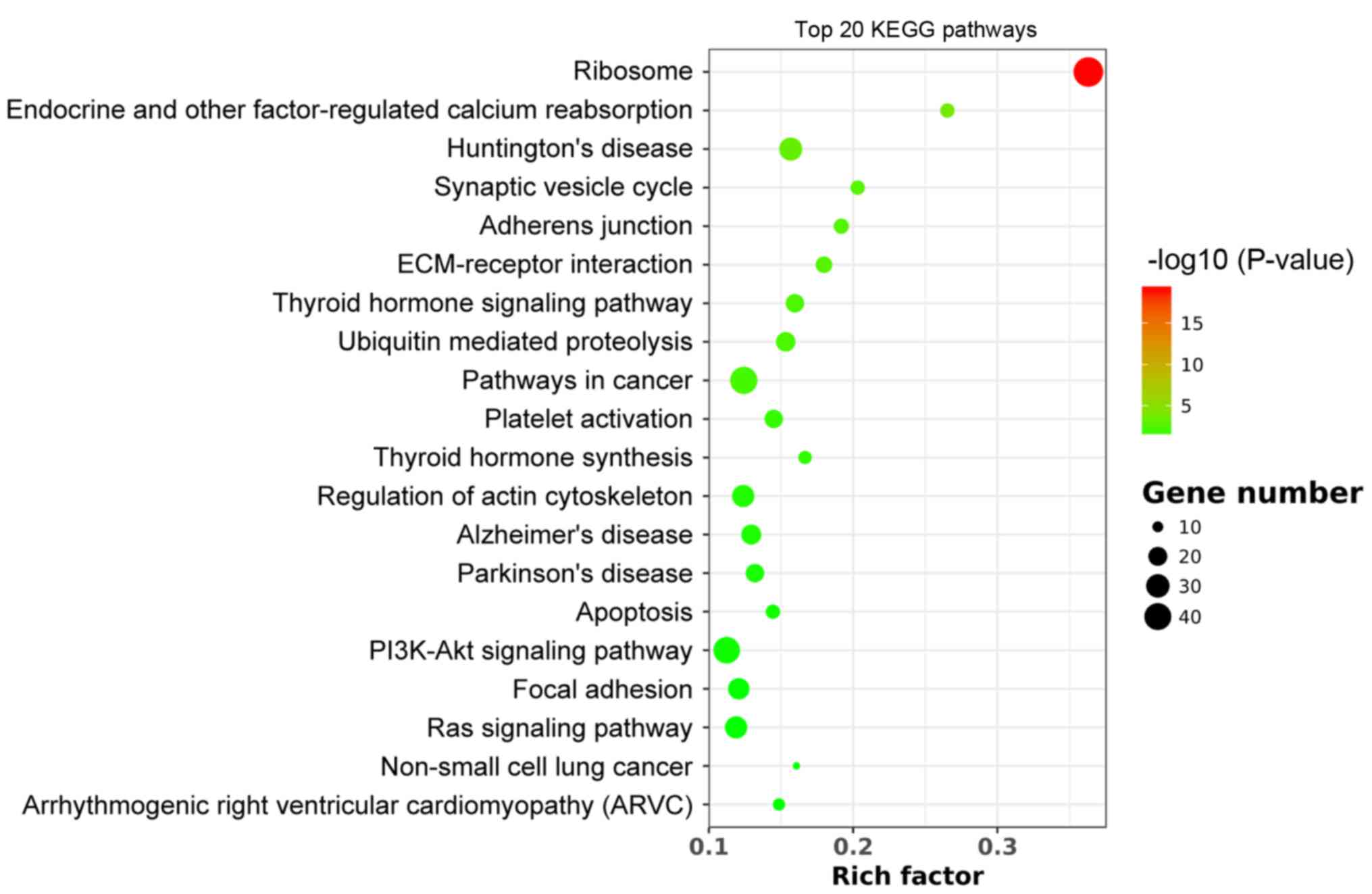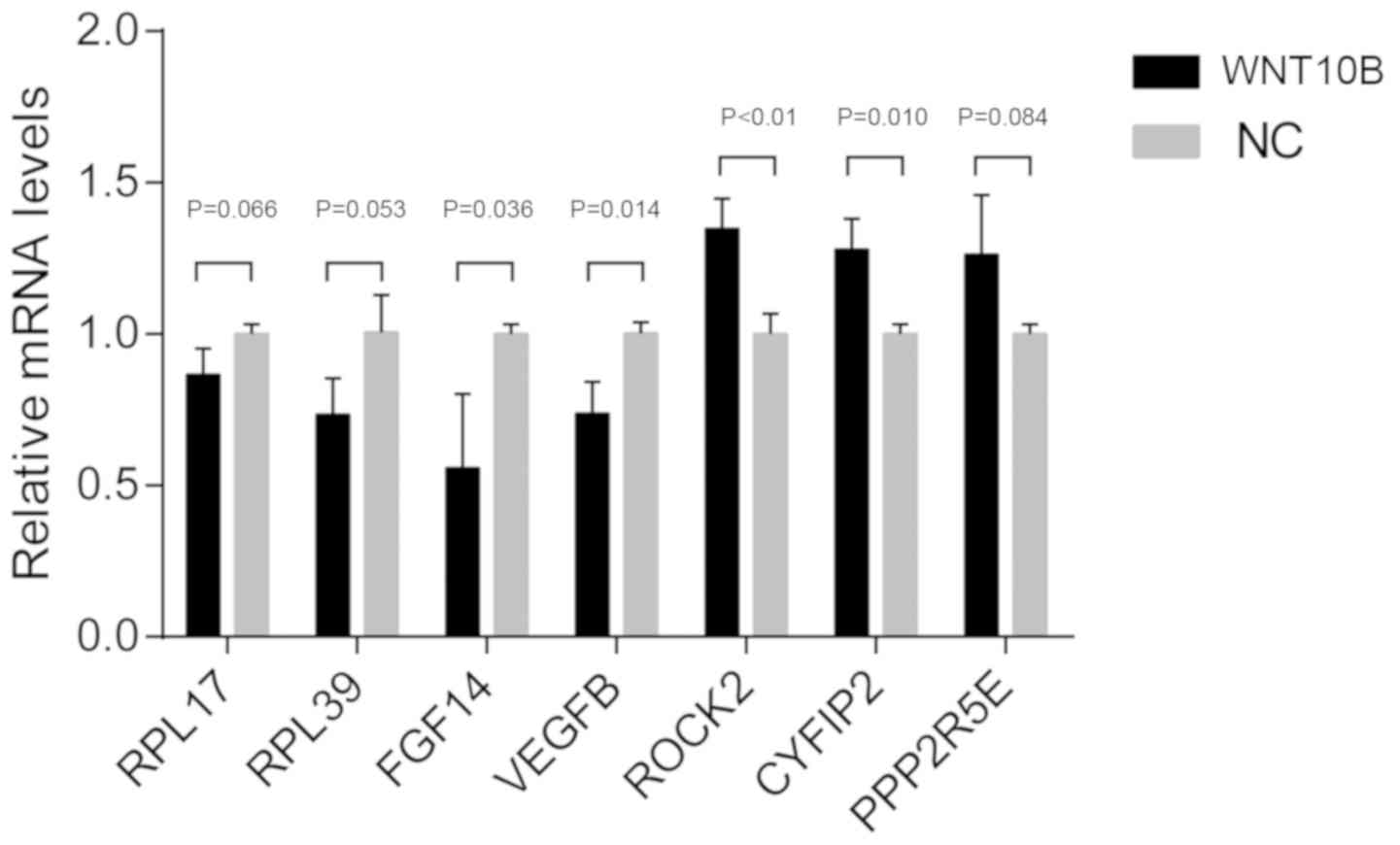|
1
|
Ma X, Tian Y, Song Y, Shi J, Xu J, Xiong
K, Li J, Xu W, Zhao Y, Shuai J, et al: Msi2 maintains quiescent
state of hair follicle stem cells by directly repressing the Hh
signaling pathway. J Invest Dermatol. 137:1015–1024. 2017.
View Article : Google Scholar : PubMed/NCBI
|
|
2
|
Harel S, Higgins CA, Cerise JE, Dai Z,
Chen JC, Clynes R and Christiano AM: Pharmacologic inhibition of
JAK-STAT signaling promotes hair growth. Sci Adv. 1:e15009732015.
View Article : Google Scholar : PubMed/NCBI
|
|
3
|
Jahoda CA and Reynolds AJ: Hair follicle
dermal sheath cells: unsung participants in wound healing. Lancet.
358:1445–1448. 2001. View Article : Google Scholar : PubMed/NCBI
|
|
4
|
Yu Z, Jiang K, Xu Z, Huang H, Qian N, Lu
Z, Chen D, Di R, Yuan T, Du Z, et al: Hoxc-dependent mesenchymal
niche heterogeneity drives regional hair follicle regeneration.
Cell Stem Cell. 23:487–500.e486. 2018. View Article : Google Scholar : PubMed/NCBI
|
|
5
|
Driskell RR, Clavel C, Rendl M and Watt
FM: Hair follicle dermal papilla cells at a glance. J Cell Sci.
124:1179–1182. 2011. View Article : Google Scholar : PubMed/NCBI
|
|
6
|
Balañá ME, Charreau HE and Leirós GJ:
Epidermal stem cells and skin tissue engineering in hair follicle
regeneration. World J Stem Cells. 7:711–727. 2015. View Article : Google Scholar : PubMed/NCBI
|
|
7
|
Ouji Y, Yoshikawa M, Shiroi A and Ishizaka
S: Wnt-10b promotes differentiation of skin epithelial cells in
vitro. Biochem Biophys Res Commun. 342:28–35. 2006. View Article : Google Scholar : PubMed/NCBI
|
|
8
|
Driskell RR, Giangreco A, Jensen KB,
Mulder KW and Watt FM: Sox2-positive dermal papilla cells specify
hair follicle type in mammalian epidermis. Development.
136:2815–2823. 2009. View Article : Google Scholar : PubMed/NCBI
|
|
9
|
Abaci HE, Coffman A, Doucet Y, Chen J,
Jacków J, Wang E, Guo Z, Shin JU, Jahoda CA and Christiano AM:
Tissue engineering of human hair follicles using a biomimetic
developmental approach. Nat Commun. 9:53012018. View Article : Google Scholar : PubMed/NCBI
|
|
10
|
Osada A and Kobayashi K: Appearance of
hair follicle-inducible mesenchymal cells in the rat embryo. Dev
Growth Differ. 42:19–27. 2000. View Article : Google Scholar : PubMed/NCBI
|
|
11
|
Ouji Y, Yoshikawa M, Moriya K and Ishizaka
S: Effects of Wnt-10b on hair shaft growth in hair follicle
cultures. Biochem Biophys Res Commun. 359:516–522. 2007. View Article : Google Scholar : PubMed/NCBI
|
|
12
|
Jahoda CA, Horne KA and Oliver RF:
Induction of hair growth by implantation of cultured dermal papilla
cells. Nature. 311:560–562. 1984. View
Article : Google Scholar : PubMed/NCBI
|
|
13
|
Jeong KH, Joo HJ, Kim JE, Park YM and Kang
H: Effect of mycophenolic acid on proliferation of dermal papilla
cells and induction of anagen hair follicles. Clin Exp Dermatol.
40:894–902. 2015. View Article : Google Scholar : PubMed/NCBI
|
|
14
|
Park S, Shin WS and Ho J: Fructus panax
ginseng extract promotes hair regeneration in C57BL/6 mice. J
Ethnopharmacol. 138:340–344. 2011. View Article : Google Scholar : PubMed/NCBI
|
|
15
|
Rendl M, Polak L and Fuchs E: BMP
signaling in dermal papilla cells is required for their hair
follicle-inductive properties. Genes Dev. 22:543–557. 2008.
View Article : Google Scholar : PubMed/NCBI
|
|
16
|
Ohyama M, Kobayashi T, Sasaki T, Shimizu A
and Amagai M: Restoration of the intrinsic properties of human
dermal papilla in vitro. J Cell Sci. 125:4114–4125. 2012.
View Article : Google Scholar : PubMed/NCBI
|
|
17
|
Galluzzi L, Spranger S, Fuchs E and
Lopez-Soto A: WNT signaling in cancer immunosurveillance. Trends
Cell Biol. 29:44–65. 2019. View Article : Google Scholar : PubMed/NCBI
|
|
18
|
Nusse R and Clevers H: Wnt/β-catenin
signaling, disease, and emerging therapeutic modalities. Cell.
169:985–999. 2017. View Article : Google Scholar : PubMed/NCBI
|
|
19
|
Siebel C and Lendahl U: Notch signaling in
development, tissue homeostasis, and disease. Physiol Rev.
97:1235–1294. 2017. View Article : Google Scholar : PubMed/NCBI
|
|
20
|
Ouji Y, Ishizaka S and Yoshikawa M: Dermal
papilla cells serially cultured with Wnt-10b sustain their hair
follicle induction activity after transplantation into nude mice.
Cell Transplant. 21:2313–2324. 2012. View Article : Google Scholar : PubMed/NCBI
|
|
21
|
Soma T, Fujiwara S, Shirakata Y, Hashimoto
K and Kishimoto J: Hair-inducing ability of human dermal papilla
cells cultured under Wnt/β-catenin signalling activation. Exp
Dermatol. 21:307–309. 2012. View Article : Google Scholar : PubMed/NCBI
|
|
22
|
Kitagawa T, Matsuda K, Inui S, Takenaka H,
Katoh N, Itami S, Kishimoto S and Kawata M: Keratinocyte growth
inhibition through the modification of Wnt signaling by androgen in
balding dermal papilla cells. J Clin Endocrinol Metab.
94:1288–1294. 2009. View Article : Google Scholar : PubMed/NCBI
|
|
23
|
Shin H, Kwack MH, Shin SH, Oh JW, Kang BM,
Kim AA, Kim J, Kim MK, Kim JC and Sung YK: Identification of
transcriptional targets of Wnt/beta-catenin signaling in dermal
papilla cells of human scalp hair follicles: EP2 is a novel
transcriptional target of Wnt3a. J Dermatol Sci. 58:91–96. 2010.
View Article : Google Scholar : PubMed/NCBI
|
|
24
|
Ouji Y, Nakamura-Uchiyama F and Yoshikawa
M: Canonical Wnts, specifically Wnt-10b, show ability to maintain
dermal papilla cells. Biochem Biophys Res Commun. 438:493–499.
2013. View Article : Google Scholar : PubMed/NCBI
|
|
25
|
Li YH, Zhang K, Ye JX, Lian XH and Yang T:
Wnt10b promotes growth of hair follicles via a canonical Wnt
signalling pathway. Clin Exp Dermatol. 36:534–540. 2011. View Article : Google Scholar : PubMed/NCBI
|
|
26
|
Lei M, Guo H, Qiu W, Lai X, Yang T,
Widelitz RB, Chuong CM, Lian X and Yang L: Modulating hair follicle
size with Wnt10b/DKK1 during hair regeneration. Exp Dermatol.
23:407–413. 2014. View Article : Google Scholar : PubMed/NCBI
|
|
27
|
Ye J, Yang T, Guo H, Tang Y, Deng F, Li Y,
Xing Y, Yang L and Yang K: Wnt10b promotes differentiation of mouse
hair follicle melanocytes. Int J Med Sci. 10:691–698. 2013.
View Article : Google Scholar : PubMed/NCBI
|
|
28
|
Li YH, Zhang K, Yang K, Ye JX, Xing YZ,
Guo HY, Deng F, Lian XH and Yang T: Adenovirus-mediated Wnt10b
overexpression induces hair follicle regeneration. J Invest
Dermatol. 133:42–48. 2013. View Article : Google Scholar : PubMed/NCBI
|
|
29
|
Zhang Y, Xing Y, Guo H, Ma X and Li Y:
Immunohistochemical study of hair follicle stem cells in
regenerated hair follicles induced by Wnt10b. Int J Med Sci.
13:765–771. 2016. View Article : Google Scholar : PubMed/NCBI
|
|
30
|
Bai X, Lei M, Shi J, Yu Y, Qiu W, Lai X,
Liu Y, Yang T, Yang L, Widelitz RB, et al: Roles of gasdermina3 in
catagen-telogen transition during hair cycling. J Invest Dermatol.
135:2162–2172. 2015. View Article : Google Scholar : PubMed/NCBI
|
|
31
|
Carroll LS and Capecchi MR: Hoxc8
initiates an ectopic mammary program by regulating Fgf10 and Tbx3
expression and Wnt/β-catenin signaling. Development. 142:4056–4067.
2015. View Article : Google Scholar : PubMed/NCBI
|
|
32
|
Zhang T, Liu L, Fan J, Tian J, Gan C, Yang
Z, Jiao H, Han B and Liu Z: Low-level laser treatment stimulates
hair growth via upregulating Wnt10b and β-catenin expression in
C3H/HeJ mice. Lasers Med Sci. 32:1189–1195. 2017. View Article : Google Scholar : PubMed/NCBI
|
|
33
|
Enshell-Seijffers D, Lindon C, Wu E,
Taketo MM and Morgan BA: Beta-catenin activity in the dermal
papilla of the hair follicle regulates pigment-type switching. Proc
Natl Acad Sci USA. 107:21564–21569. 2010. View Article : Google Scholar : PubMed/NCBI
|
|
34
|
Reddy S, Andl T, Bagasra A, Lu MM, Epstein
DJ, Morrisey EE and Millar SE: Characterization of Wnt gene
expression in developing and postnatal hair follicles and
identification of Wnt5a as a target of sonic hedgehog in hair
follicle morphogenesis. Mech Dev. 107:69–82. 2001. View Article : Google Scholar : PubMed/NCBI
|
|
35
|
Matheson J, Bühnemann C, Carter EJ, Barnes
D, Hoppe HJ, Hughes J, Cobbold S, Harper J, Morreau H, Surakhy M
and Hassan AB: Epithelial-mesenchymal transition and nuclear
β-catenin induced by conditional intestinal disruption of Cdh1 with
Apc is E-cadherin EC1 domain dependent. Oncotarget. 7:69883–69902.
2016. View Article : Google Scholar : PubMed/NCBI
|
|
36
|
Cheon SS, Cheah AY, Turley S, Nadesan P,
Poon R, Clevers H and Alman BA: beta-Catenin stabilization
dysregulates mesenchymal cell proliferation, motility, and
invasiveness and causes aggressive fibromatosis and hyperplastic
cutaneous wounds. Proc Natl Acad Sci USA. 99:6973–6978. 2002.
View Article : Google Scholar : PubMed/NCBI
|
|
37
|
Lin GL and Hankenson KD: Integration of
BMP, Wnt, and notch signaling pathways in osteoblast
differentiation. J Cell Biochem. 112:3491–3501. 2011. View Article : Google Scholar : PubMed/NCBI
|
|
38
|
Ouji Y, Yoshikawa M, Moriya K, Nishiofuku
M, Matsuda R and Ishizaka S: Wnt-10b, uniquely among Wnts, promotes
epithelial differentiation and shaft growth. Biochem Biophys Res
Commun. 367:299–304. 2008. View Article : Google Scholar : PubMed/NCBI
|
|
39
|
Livak KJ and Schmittgen TD: Analysis of
relative gene expression data using real-time quantitative PCR and
the 2(-Delta Delta C(T)) method. methods. 25:402–408. 2001.
View Article : Google Scholar : PubMed/NCBI
|
|
40
|
Nilforoushzadeh MA, Zare M, Zarrintaj P,
Alizadeh E, Taghiabadi E, Heidari-Kharaji M, Amirkhani MA, Saeb MR
and Mozafari M: Engineering the niche for hair regeneration - A
critical review. Nanomedicine. 15:70–85. 2019. View Article : Google Scholar : PubMed/NCBI
|
|
41
|
El Agha E, Kramann R, Schneider RK, Li X,
Seeger W, Humphreys BD and Bellusci S: Mesenchymal stem cells in
fibrotic disease. Cell Stem Cell. 21:166–177. 2017. View Article : Google Scholar : PubMed/NCBI
|
|
42
|
Madaan A, Verma R, Singh AT and Jaggi M:
Review of hair follicle dermal papilla cells as in vitro screening
model for hair growth. Int J Cosmet Sci. 40:429–450. 2018.
View Article : Google Scholar : PubMed/NCBI
|
|
43
|
Kim OY, Cha HJ, Ahn KJ, An IS, An S and
Bae S: Identification of microRNAs involved in growth arrest and
cell death in hydrogen peroxide-treated human dermal papilla cells.
Mol Med Rep. 10:145–154. 2014. View Article : Google Scholar : PubMed/NCBI
|
|
44
|
Kim J, Shin JY, Choi YH, Jang M, Nam YJ,
Lee SY, Jeon J, Jin MH and Lee S: Hair growth promoting effect of
hottuynia cordata extract in cultured human hair follicle dermal
papilla cells. Biol Pharm Bull. 42:1665–1673. 2019. View Article : Google Scholar : PubMed/NCBI
|
|
45
|
Zhang X, Xiao S, Liu B, Miao Y and Hu Z:
Use of extracellular matrix hydrogel from human placenta to restore
hair-inductive potential of dermal papilla cells. Regen Med.
2019.(Epub ahead of print). View Article : Google Scholar
|
|
46
|
Shim JH, Lee TR and Shin DW: Novel in
vitro culture condition improves the stemness of human dermal
stem/progenitor cells. Mol Cells. 36:556–563. 2013. View Article : Google Scholar : PubMed/NCBI
|
|
47
|
Jansson L, Kim GS and Cheng AG: Making
sense of Wnt signaling-linking hair cell regeneration to
development. Front Cell Neurosci. 9:662015. View Article : Google Scholar : PubMed/NCBI
|
|
48
|
Myung PS, Takeo M, Ito M and Atit RP:
Epithelial Wnt ligand secretion is required for adult hair follicle
growth and regeneration. J Invest Dermatol. 133:31–41. 2013.
View Article : Google Scholar : PubMed/NCBI
|
|
49
|
Buszczak M, Signer RA and Morrison SJ:
Cellular differences in protein synthesis regulate tissue
homeostasis. Cell. 159:242–251. 2014. View Article : Google Scholar : PubMed/NCBI
|
|
50
|
Signer RA, Magee JA, Salic A and Morrison
SJ: Haematopoietic stem cells require a highly regulated protein
synthesis rate. Nature. 509:49–54. 2014. View Article : Google Scholar : PubMed/NCBI
|
|
51
|
Peltier J, O'Neill A and Schaffer DV:
PI3K/Akt and CREB regulate adult neural hippocampal progenitor
proliferation and differentiation. Dev Neurobiol. 67:1348–1361.
2007. View Article : Google Scholar : PubMed/NCBI
|
|
52
|
Du KT, Deng JQ, He XG, Liu ZP, Peng C and
Zhang MS: MiR-214 regulates the human hair follicle stem cell
proliferation and differentiation by targeting EZH2 and
Wnt/β-catenin signaling way in vitro. Tissue Eng Regen Med.
15:341–350. 2018. View Article : Google Scholar : PubMed/NCBI
|
|
53
|
Gentile P, Scioli MG, Bielli A, De Angelis
B, De Sio C, De Fazio D, Ceccarelli G, Trivisonno A, Orlandi A,
Cervelli V and Garcovich S: Platelet-rich plasma and micrografts
enriched with autologous human follicle mesenchymal stem cells
improve hair re-growth in androgenetic alopecia. Biomolecular
pathway analysis and clinical evaluation. Biomedicines. 7:E272019.
View Article : Google Scholar : PubMed/NCBI
|
|
54
|
Woo H, Lee S, Kim S, Park D and Jung E:
Effect of sinapic acid on hair growth promoting in human hair
follicle dermal papilla cells via Akt activation. Arch Dermatol
Res. 309:381–388. 2017. View Article : Google Scholar : PubMed/NCBI
|
|
55
|
Feutz AC, Barrandon Y and Monard D:
Control of thrombin signaling through PI3K is a mechanism
underlying plasticity between hair follicle dermal sheath and
papilla cells. J Cell Sci. 121:1435–1443. 2008. View Article : Google Scholar : PubMed/NCBI
|
|
56
|
Zhang H, Nan W, Wang S, Zhang T, Si H,
Yang F and Li G: Epidermal growth factor promotes proliferation and
migration of follicular outer root sheath cells via wnt/β-catenin
signaling. Cell Physiol Biochem. 39:360–370. 2016. View Article : Google Scholar : PubMed/NCBI
|
|
57
|
Yin G, Liang Y, Wang Y, Yang Y, Yang M,
Cen XM and Xie QB: mTOR complex 1 signalling regulates the balance
between lipid synthesis and oxidation in hypoxia lymphocytes.
Biosci Rep. 37:BSR201604792017. View Article : Google Scholar : PubMed/NCBI
|
|
58
|
Chen JJ and Zhang S: Heme-regulated
eIF2alpha kinase in erythropoiesis and hemoglobinopthies. Blood.
20190019152019.
|
|
59
|
Lee G, Zheng Y, Cho S, Jang C, England C,
Dempsey JM, Yu Y, Liu X, He L, Cavaliere PM, et al:
Post-transcriptional regulation of de novo lipogenesis by
mTORC1-S6K1-SRPK2 signaling. Cell. 171:1545–1558. e1518. 2017.
View Article : Google Scholar : PubMed/NCBI
|
|
60
|
Kumar D, Nitzan E and Kalcheim C: YAP
promotes neural crest emigration through interactions with BMP and
Wnt activities. Cell Commun Signal. 17:692019. View Article : Google Scholar : PubMed/NCBI
|
|
61
|
Massey J, Liu Y, Alvarenga O, Saez T,
Schmerer M and Warmflash A: Synergy with TGFβ ligands switches WNT
pathway dynamics from transient to sustained during human
pluripotent cell differentiation. Proc Natl Acad Sci USA.
116:4989–4998. 2019. View Article : Google Scholar : PubMed/NCBI
|
|
62
|
Kahn M: Wnt signaling in stem cells and
cancer stem cells: A tale of two coactivators. Prog Mol Biol Transl
Sci. 153:209–244. 2018. View Article : Google Scholar : PubMed/NCBI
|
|
63
|
Wend P, Wend K, Krum SA and
Miranda-Carboni GA: The role of WNT10B in physiology and disease.
Acta Physiol (Oxf). 204:34–51. 2012. View Article : Google Scholar : PubMed/NCBI
|
|
64
|
Sanchez CG, Teixeira FK, Czech B, Preall
JB, Zamparini AL, Seifert JR, Malone CD, Hannon GJ and Lehmann R:
Regulation of ribosome biogenesis and protein synthesis controls
germline stem cell differentiation. Cell Stem Cell. 18:276–290.
2016. View Article : Google Scholar : PubMed/NCBI
|













